In Bogotá and Beyond, Cycling Offers a Lane Into the Future of Sustainable Tourism in Colombia
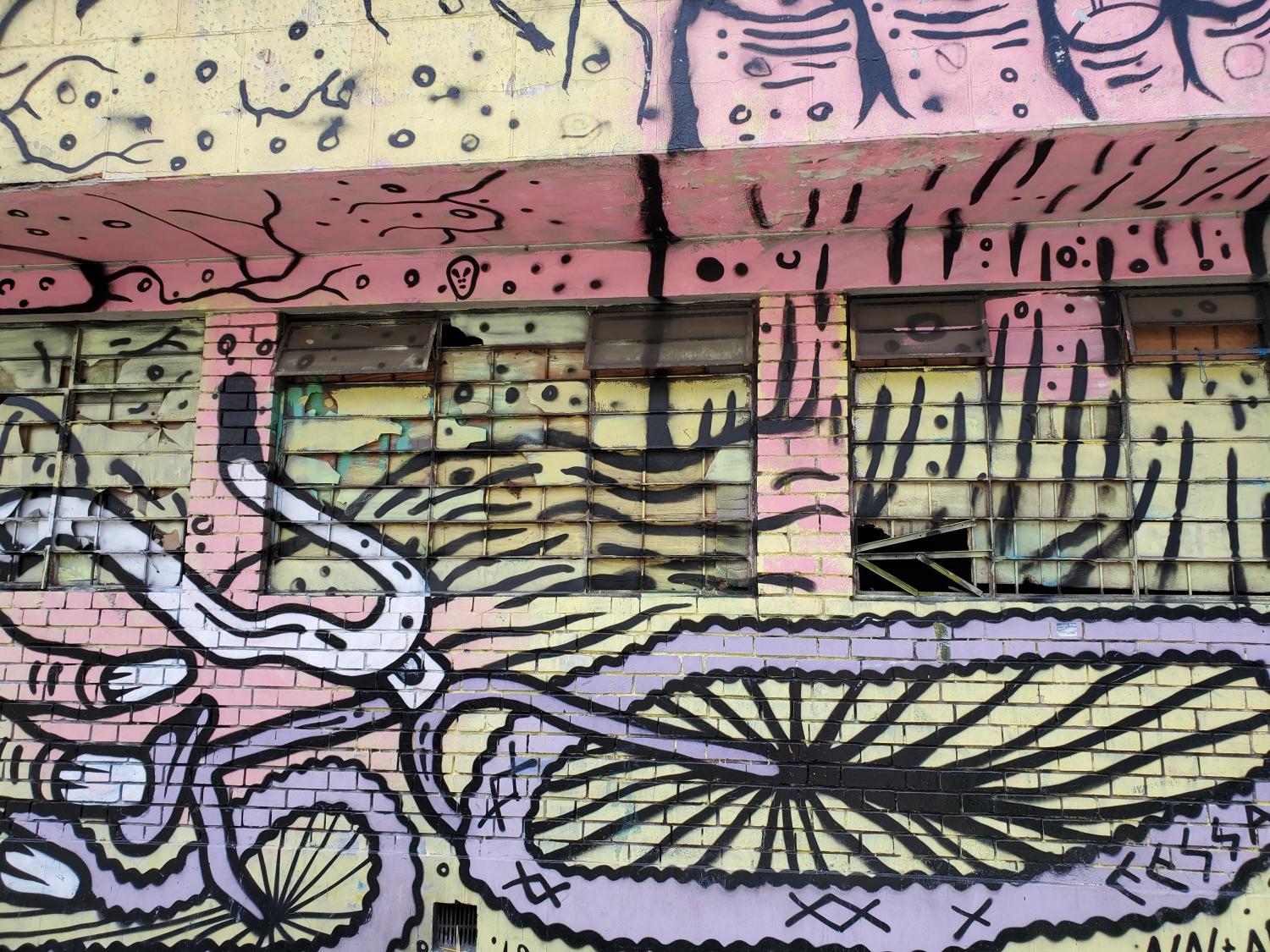
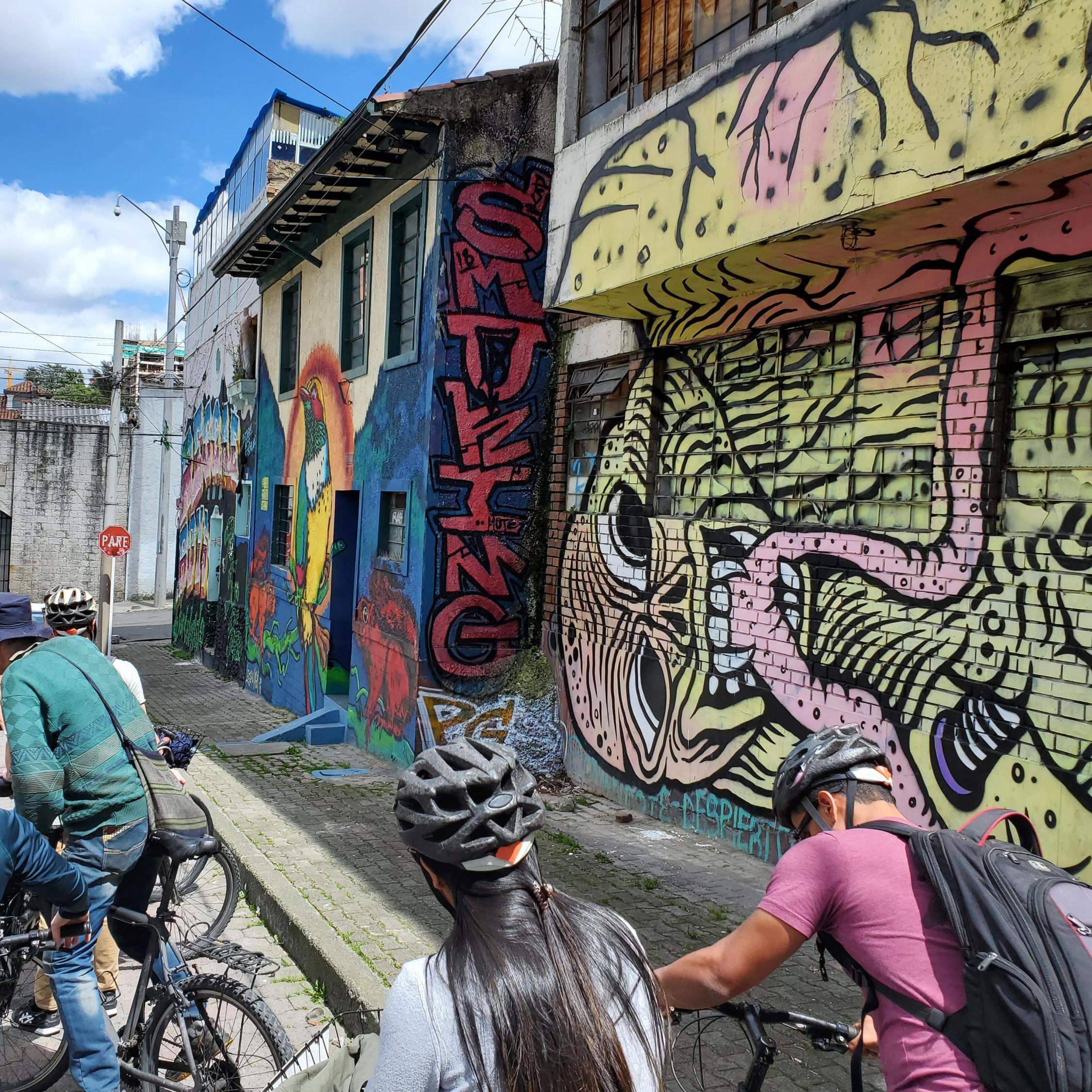
Colombians were justifiably beside themselves when one of their own, Egan Bernal, won last year’s Tour de France. In the iconic cycling race dominated for decades by the Belgians, Spanish, Italians and, yes, the French, Bernal was the first Latin American to win the 2,200-mile (3,500 kilometers) race.
But Bernal’s victory should hardly be a surprise. Colombia has a proud legacy of cyclists, with names like Winner Anacona, Esteban Chaves, Fernando Gaviria, Nairo Quintana and Rigoberto Urán.
That legacy is one reason the country has emerged as a cycling tourism destination — and once the planet can move beyond this pandemic, Colombia and its citizens will welcome more visitors to its cities’ streets and rural roads.
As of press time, Colombia still has strict controls in place for international visitors. But at some point, whether a vaccine scales up worldwide (or the virus “miraculously” disappears) cities and towns across the country will be eager to welcome tourists back en masse — and visitors will be glad they arrived.
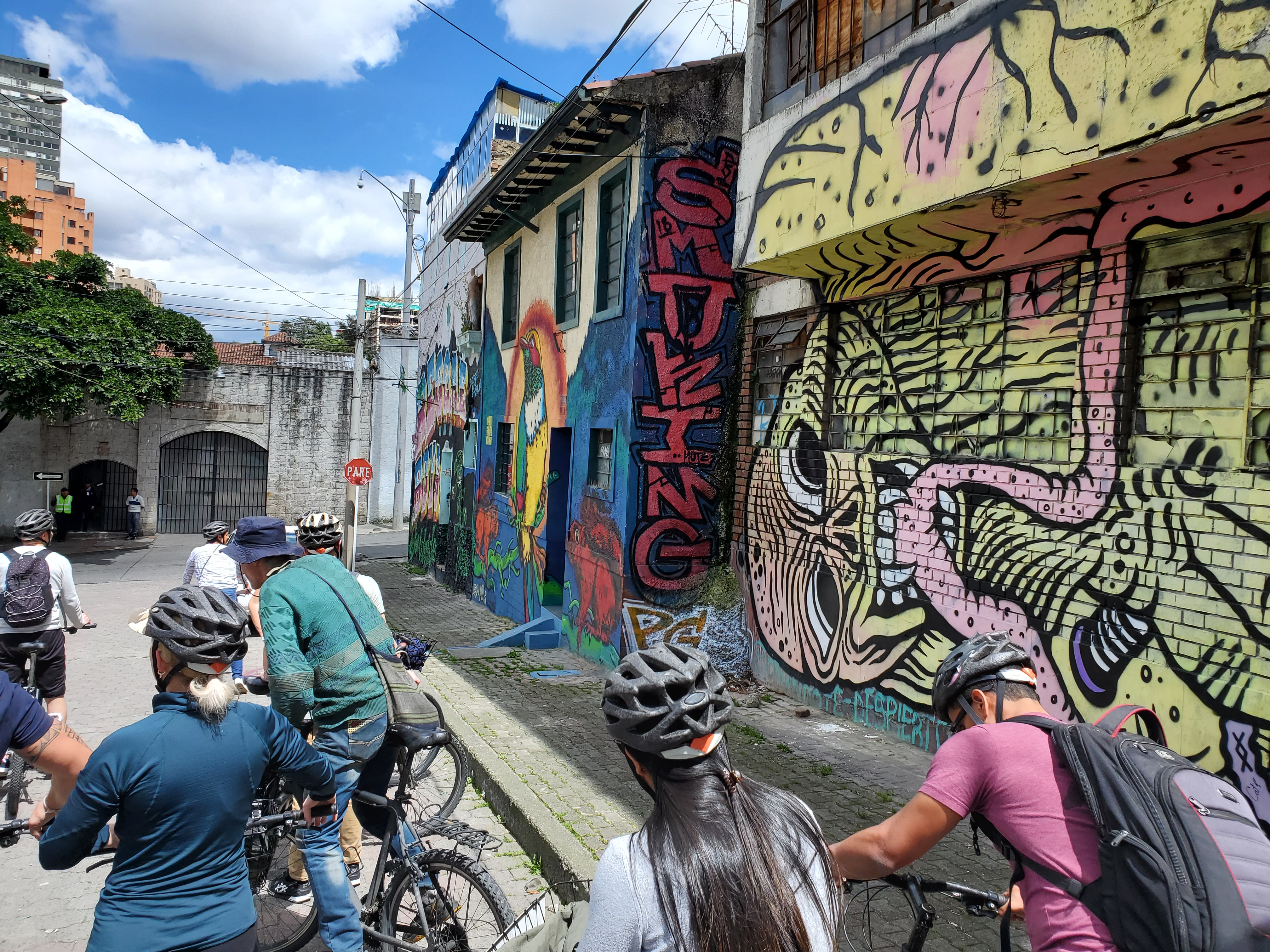
Anyone planning a cycling trip around Colombia can launch where most visitors land: the country’s capital, Bogotá. From there, more options for exploring Colombia’s cycling heritage await, such as in the coffee-growing regions of Valle de Cauca and Caldas, as well as along the Caribbean coast from cities such as Santa Marta.
Much of Colombia is a natural for cycling
That heritage comes from the fact that many Colombians have long been obsessed with cycling. Some of this comes from the realities of life in the cities. Bogotá and Medellín are among the Colombian cities that have closed major roads on Sundays for years, in part to combat those urban areas’ stubborn air pollution. The success of those car-free days, or ciclovía, have helped inspire other cities like Los Angeles to launch their own version of days dedicated to closing streets to cars and opening them to residents to do what they wish: cycling, pushing a stroller, roller skating or walking.
Blogger Chris Bell best summed up why Colombia has such a rich cycling history and culture:
“If the cycling gods could have designed their own country, it would likely look something like Colombia, a country where the Andes mountains split into three huge ranges, making for a nation of epic uphills and dramatic downhills. Throw in high-altitudes and long-distances, and you have a recipe for some truly amazing — and challenging — cycling. This perfect mixture means that Colombia has produced more than its fair share of world-class cyclists over the years.”
Naturally, tour operators have offered trips that involve experiencing Colombia via cycling for all or part of a travel itinerary through this country home to 50 million people, including G Adventures, Intrepid and REI Adventures.

But if an itinerary of cycling day after day isn’t how you envision a vacation, consider a day tour in one of Colombia’s jam-packed cities or somewhere within the country’s stellar countryside. And when hopping on a bicycle, you will also most likely score a window viewing sustainable development and tourism efforts underway across Colombia.
A capital experience: Learning about Colombia’s proud and volatile history on two wheels
At a first glance, Bogotá seems to the last place anyone would want to cycle. Home to 7.4 million people, the city’s grit and congestion may make one think of Guns N’ Roses' 1987 classic, “Welcome to the [Urban] Jungle.” One’s first impression may be to stick to a taxi and dive into the city’s dining life and vibrant restaurant scene. But you’ll have to burn off those calories eventually, and a half-day cycling tour should do the trick.
At first pedal, you might ask yourself what on earth you were thinking — the city is 8,660 feet (2,640 meters) above sea level, making what seems like a brisk walk feel like the final mile of a marathon to those unaccustomed to being at such a high elevation.
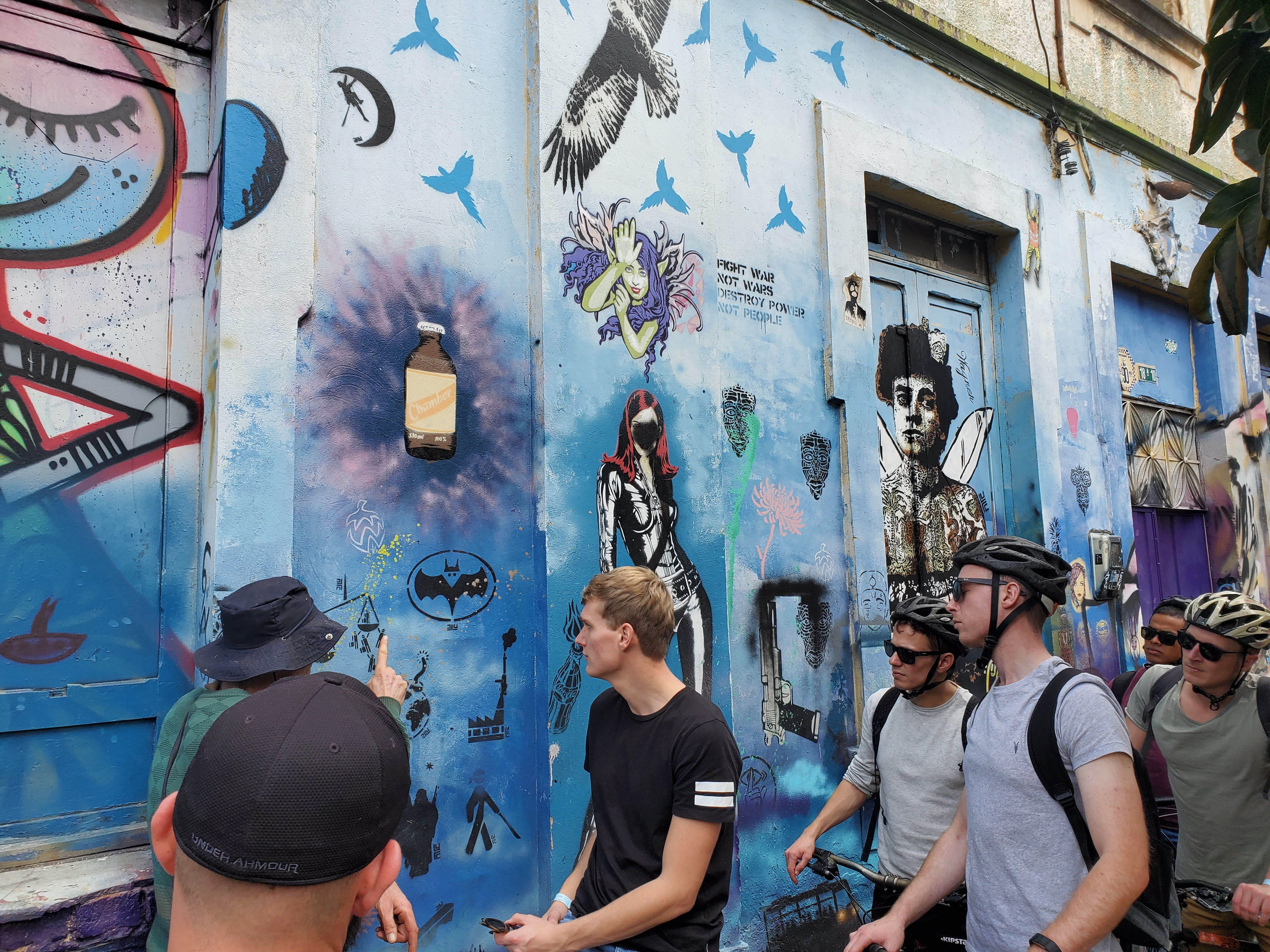
But 40 years after that first ciclovía, Bogotá has an impressive network of about 225 miles (362 kilometers) of bike lanes, depending on the source consulted. And for the most part, these bicycle lanes are fairly distributed across the city. Colombia has long struggled with income inequality, but at least on this metric, Bogotá’s residents largely have unfettered access to city streets if they seek an alternative to driving or the city’s chaotic public transportation system.
Most visitors, however, will want to base a bicycle tour in Bogotá’s La Candelaria district, a historic neighborhood that lies at the base of Monserrate, the 10,000-foot-high peak that can be seen from most of the city. A bicycle tour here will offer a peek at the main square, Plaza Bolívar, countless museums, and an array of architectural styles that include Art Deco, Baroque and Spanish Colonial.
But such a tour also gives you a window into the small businesses and activities that define life in Bogotá for many residents, opportunities you may not have if you venture on your own or are on a conventional tour bus. There is the chance to venture into one of the city’s produce markets, where fruits like lulo or tomate de arbol (tree tomato) are on offer — some of which are the result of efforts in Colombia to scale up more sustainable and climate-smart agriculture.

Or, you may have the chance to play tejo, a popular pastime that involves tossing a heavy metal ball (the tejo) into ring laid with mechas, small tabs filled with gunpowder — if you hit a mecha, you score points and can take a swig of local beer like Poker or Aguila (and everyone else in the tejo hall will join you!). Depending on the tour you book, you’ll be able to check out the city’s thriving public art scene or social experiments such as the city’s “Tolerance Zone.”
Bottom line: Booking a bike tour ensures you’re supporting a local business. One such tour company, Bogotá Bike Tours, employs several locals and offers tours twice a day for 45,000 pesos (US$12) — and according to the latest update is still doing so while Colombia is under quarantine.
Coming soon: Cycling in Colombia’s second largest city, Medellín.
Image credits: Leon Kaye

The Black Lives Matter Movement Will Not Be Shamed Away, and the NBA Shows Why


Doing business in China is nothing unusual for leading U.S. corporations, even for those that profess to work for human rights. However, the National Basketball Association (NBA) has become the focus of attention, due to its high profile as a business, the celebrity status of its employees and its support for the Black Lives Matter movement. The NBA’s response to criticism of its business in China is now more significant than ever as Election Day 2020 approaches, yet the league has remained largely silent.
Editors note: Be sure to sign up for the weekly Brands Taking Stands newsletter, which arrives in your inbox every Wednesday.
Follow the money
For some insight into the NBA’s silence on human rights abuses in China, consider the league in the context of other businesses. Not too long ago, the main advantage for U.S. companies doing business in China was access to an inexpensive labor pool, which plunged many into the murky world of labor exploitation.
The labor rights issue has become ever more fraught in recent years, as new evidence emerges of an intensive ethnic cleansing policy toward Muslim Uyghurs and other minority groups that involves forced labor in concentration camps. Last spring, the Australian Strategic Policy Institute identified 83 global brands with ties to forced labor in China. The list includes the U.S. companies Apple, Gap and Nike.
Adding fuel to the fire is the growth of China’s middle class, leading to an increased demand for consumer goods, including NBA merchandise. Tesla and General Motors are among the U.S. car makers with a deep interest in the Chinese consumer market.
Betting on China, trade wars (and a global health crisis) or not
Even though 2020 has been disrupted by a trade war and the COVID-19 pandemic, there is still a strong bottom-line case to be made for U.S. corporations to continue fostering business in China.
Last year, Forbes senior contributor Kenneth Rapoza ran down the factors that motivate many U.S. companies to continue seeking growth in China, regardless of a trade war between the two nations. “For all-around emerging market manufacturing know-how, for reliability, for currency stability, for safety and for domestic market growth, China is No. 1. The rest are more like No. 100,” he wrote.
That explains why household names like KFC, McDonald’s, Starbucks and other leading consumer brands have a high profile in China. U.S. companies that are not household names also do well there. In 2018, for example, the Indiana-based engine manufacturer Cummins reported that China accounted for more than a third of its engine sales.
Rapoza also pointed out that top-rated ESG (environmental, social and governance) funds have an interest in the Chinese markets, through investments in companies including Alibaba and Mengniu Dairy.
If anything, the global pandemic has added to the bottom-line incentive for doing business in China. Last year, National Public Radio cited Cummins spokesman Jon Mills, who explained that revenue from China can help balance a company’s ledger books if the market drops in the U.S.
That global ledger-balancing perspective has become even more relevant this year, as federal mismanagement of the COVID-19 crisis in the U.S. continues to drag down the domestic economy.
NBA learns the hard way
Even while COVID-19 tore through the U.S. last spring, the Black Lives Matter movement forced more U.S. corporations to step up and advocate for human rights in the U.S., with the NBA and other professional sports leagues front and center.
That has led some critics to raise the question of why the NBA and its players have not used their high profile and celebrity status to criticize human rights abuses in China.
One answer is that they did, and they suffered the consequences.
A year ago, Houston Rockets General Manager Daryl Morely tweeted, then deleted, a comment in support of protesters in Hong Kong. Reaction from the Chinese government was swift and furious, resulting in millions of dollars in lost revenue, including the loss of merchandise sales.
Partisan pressure on NBA over Black Lives Matter activism
Following its weak response to Morely’s Hong Kong tweet, the NBA drew a firestorm of media attention criticizing the league’s actions. A bipartisan group of U.S. senators also publicly lambasted the league for failing to stand up in support of human rights in China.
In the wake of the Black Lives Matter movement, though, the call for action has lost its bipartisan force.
Last June, Sen. Marsha Blackburn (R-Tenn.) wrote a letter to the NBA regarding its relationship with China. In July, she took credit for forcing the league to close its training facility in Xinjiang Province, a region where major concentration camps are reportedly located.
For the record, NBA operations in Xinjiang had already been the subject of media criticism in 2018, and the league terminated that relationship more than a year before Blackburn issued her letter.
Perhaps for that reason, the Blackburn letter failed to attract the media spotlight for long, if at all. Nevertheless, in August Sen. Ted Cruz (R-Texas) wrote a letter concurring with Blackburn, and last week Sen. Rick Scott (R-Fla.) issued a new letter calling upon the NBA and hundreds of other leaders in business and government to condemn human rights abuses in China.
“Are you willing to support a country committed to abusing and killing Muslim citizens in concentration camps?” Scott wrote. "Are you willing to stand idly by as Hong Kongers are stripped of their dignity and basic rights? If this was happening in America, what would you do?”
Why the Black Lives Matter movement will not fade away
Scott’s letter has also failed to attract significant media attention so far, though it has provided some pundits with an opportunity to criticize the NBA for supporting Black Lives Matter activism in the U.S. while failing to condemn human rights abuses in China.
However, the irony of Scott’s question — “If this was happening in America, what would you do?” — is striking in the context of the Black Lives Matter movement, which has drawn renewed attention to the fact that mass incarceration, voter suppression, and other significant race-based human rights abuses still take place routinely in the U.S., more than 400 years after the first enslaved Africans were forced into labor in North America.
Adding to the irony is President Donald Trump’s failure to denounce white supremacy in the U.S. just last week, during the presidential debate in Cleveland.
How business leaders can follow the NBA’s lead
Yahoo Sports features writer Henry Bushnell summed up the situation last July when he argued that the failure to criticize human rights abuses in China does not, and should not, detract from the force of Black Lives Matter activism.
“To use the neglect of some injustice to detract from the fight against other injustice is to uphold all of it,” he wrote. “Change is local. Successful fights for it are often hyper-focused. Black Americans, some of whom comprise a majority of the NBA, are trying to lead one.”
“To support their fight, to affirm that Black lives matter, to do your part to dismantle systemic racism, is not an affront to Muslims detained in China, or families brutalized in Syria, or women denied rights in Iran, or LGBTQ+ people denied humanity everywhere,” Bushnell continued.
The NBA, for one, has not allowed itself to become distracted. Last month the league announced plans to use its venues as polling places, helping to ensure that voters can cast their ballot in person for the 2020 general election, while reducing the risk of exposure to COVID-19.
Those plans are still moving forward along with other efforts aimed at motivating voters to participate. That includes an in-house voter registration drive spearheaded by Oklahoma City Thunder guard and NBA Players Association president, Chris Paul, resulting in a sky-high voter registration rate of 90 percent among NBA players.
The message to other corporate leaders is clear: The Black Lives Matter movement will not fade away on its own, and it will not be shamed away.
In the days, weeks, and months to come, the fight for human rights and civil rights in the U.S. will become more important than ever, even as President Trump seeks to sow violence and confusion before — and after — Election Day.
The NBA and several other leading U.S. corporations have already stepped up to advocate for American democracy. Now is the time for more business leaders, not fewer, to raise their voices in support of that effort.
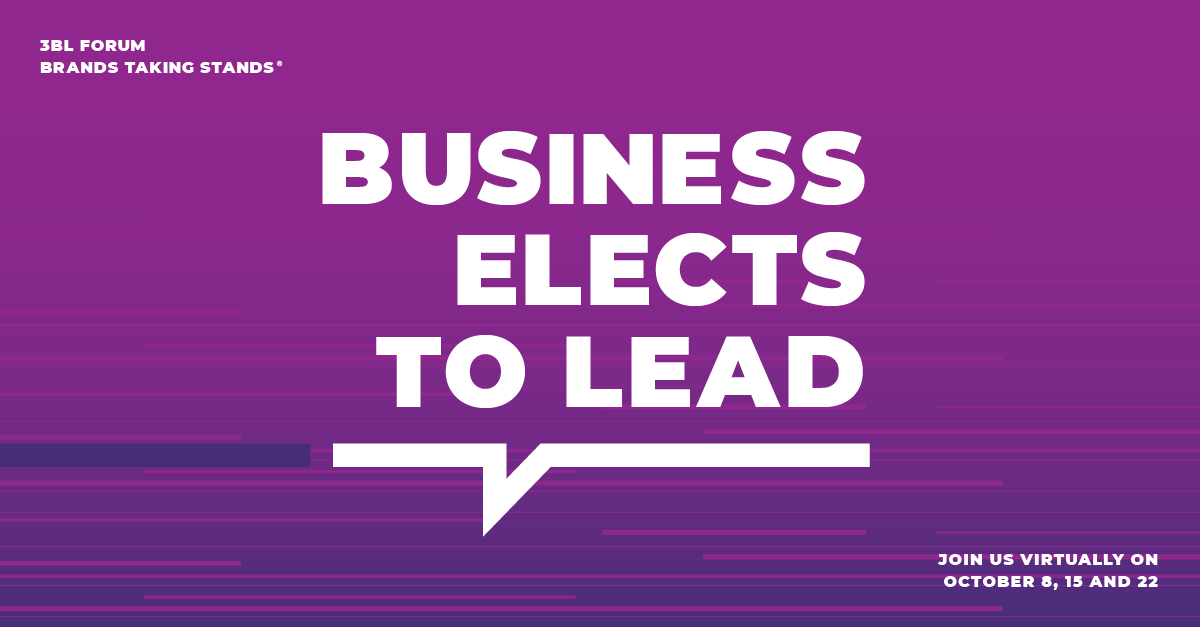
Starting at Noon ET Thursday, October 8, and for the following two Thursdays, October 15 and 22, we’ll be talking about business leadership during times of crisis at this year’s 3BL Forum – Brands Taking Stands: Business Elects to Lead. Be sure to register for free here!
Image credit: David Vives/Unsplash
This is a Defining Moment for CSR Leaders: Stand Out, or Lose Our Faith


We’re at a tipping point for the corporate social responsibility (CSR) movement. One year ago, the world’s top CEOs made a bold proclamation about the purpose of business, stating that businesses exist for more than generating wealth for shareholders, and in fact, exist to benefit all stakeholders, including employees and the communities they serve. Most publicized from this group was Larry Fink, CEO of BlackRock, who issued a letter to all clients: “Contribute to society, or risk losing our support.” It's a simple message: Move forward on CSR, or be left behind.
Yet one year later, these CEOs have generated incredible amounts of wealth, despite a global health, economic and environmental crisis. Jeff Bezos has added nearly $50 billion to his net worth, and while he has ramped up his charitable contributions, as writer Anand Giridharadas points out, “Jeff Bezos wants to start a school for kids whose families are underpaid by people like Jeff Bezos.” In another instance, BlackRock has added over 15 percent to its market capitalization this year. And yet, even after its PR campaign for impact investing received global praise, it remains invested in environmentally-depleting projects, including the Keystone XL pipeline.
Sick of the empty promises from these corporate leaders, U.S. Sen. Elizabeth Warren (D-Mass.) lambasted the world’s top CEOs for their lack of meaningful action. The CEOs, many now even richer despite the worst economic crisis of our lives, have once again shown that capitalism’s ruthless pursuit of profits are their biggest motivating force.
Facebook is perhaps the worst offender. Investing minimally in any social impact or giving programs, it instead proclaims that its mission of connecting people is social good enough. Meanwhile, it is spending massive amounts of cash buying advertisements in The Washington Post and other journals to educate the population on all the steps it is taking to address misinformation, yet its actions are clear that it won’t do so in a way that hurts profits.
Andrew Winston, in his 2019 HBR article Is the Business Roundtable Statement Just Empty Rhetoric? foresaw this, imploring that we must “hold these companies to their words — as employees, customers, community members, and shareholders. Let’s demand that they truly embrace longer-term thinking and fight for policies that enable a thriving world. Otherwise, it’s just empty rhetoric.”
Like democracy and the environment, the CSR profession is at a tipping point. As we complete our first year of the final decade to achieve the U.N. Sustainable Development Goals (SDGs), companies are making more sweeping claims about environmental actions, like Microsoft’s commitment to be carbon and water negative or Amazon’s climate pledge friendly program.
Yet, in order to achieve these goals, CSR professionals cannot resume business as normal.
Far too many companies still rely on traditional philanthropy, counting things like dollars raised or hours volunteered. These numbers have no ability to help us achieve the SDGs. CSR leaders must instead get their companies to measure the right thing and focus CEO attention on where it matters most: ethical, sustainable, equal, and inclusive business practices that do less harm while sharing benefits with all stakeholders.
As Dan Ariely shared, “you are what you measure,” and CSR leaders can create an outsized impact by getting their companies to measure the right things. Every year, companies spend at least $13 trillion just in business transactions with other businesses. If CSR leaders can help this money be spent in economically, socially, more equitable and more environmentally responsible ways, they can mobilize their company’s most powerful level to make lasting change. Take SAP for example, the CSR team of which has worked with executives to commit 5 percent of its spend to social enterprise and another 5 percent of its spend to underrepresented businesses. This is in addition to industry-leading employee volunteering and giving initiatives, as well as commitments for sustainability, where it has ranked at the top of the Dow Jones Sustainability Index for the past 10 years.
The next 10 months will define the CSR space for the next 10 years. CSR leaders within companies will either advocate and create a company of the future that embodies real stakeholder capitalism, or capitalism will cling to cheap, charitable mindsets that propagates the inequalities and environmental degradation it claims to address. Every major institution that is attempting to create a sustainable, just, and equitable world is calling on corporations to adapt before it’s too late. Just this last month, the World Economic Forum published a report, COVID-19 Action Agenda: Leaders on the Front Line, which shows direct, meaningful actions that corporations can take to live into the Business Purpose Roundtable promise.
Edelman’s Trust Barometer shows that trust in CEOs and businesses continues to decline. CSR leaders within companies have the opportunity to right the position of corporations in society. To borrow and build on the words of Larry Fink, “stand for something, or lose the respect of your partners, consumers, employees, and legislators.” PR campaigns won’t cut it. Change the way your business makes and spends its money as part of its core operations, or be complicit in propagating and extending the negative consequences that the 2020 confluence of crises have brought to our planet.
Image credit: Bill Oxford/Unsplash
Four Weeks Out, These Companies and Their Partners Are Striving to Secure Voting Rights
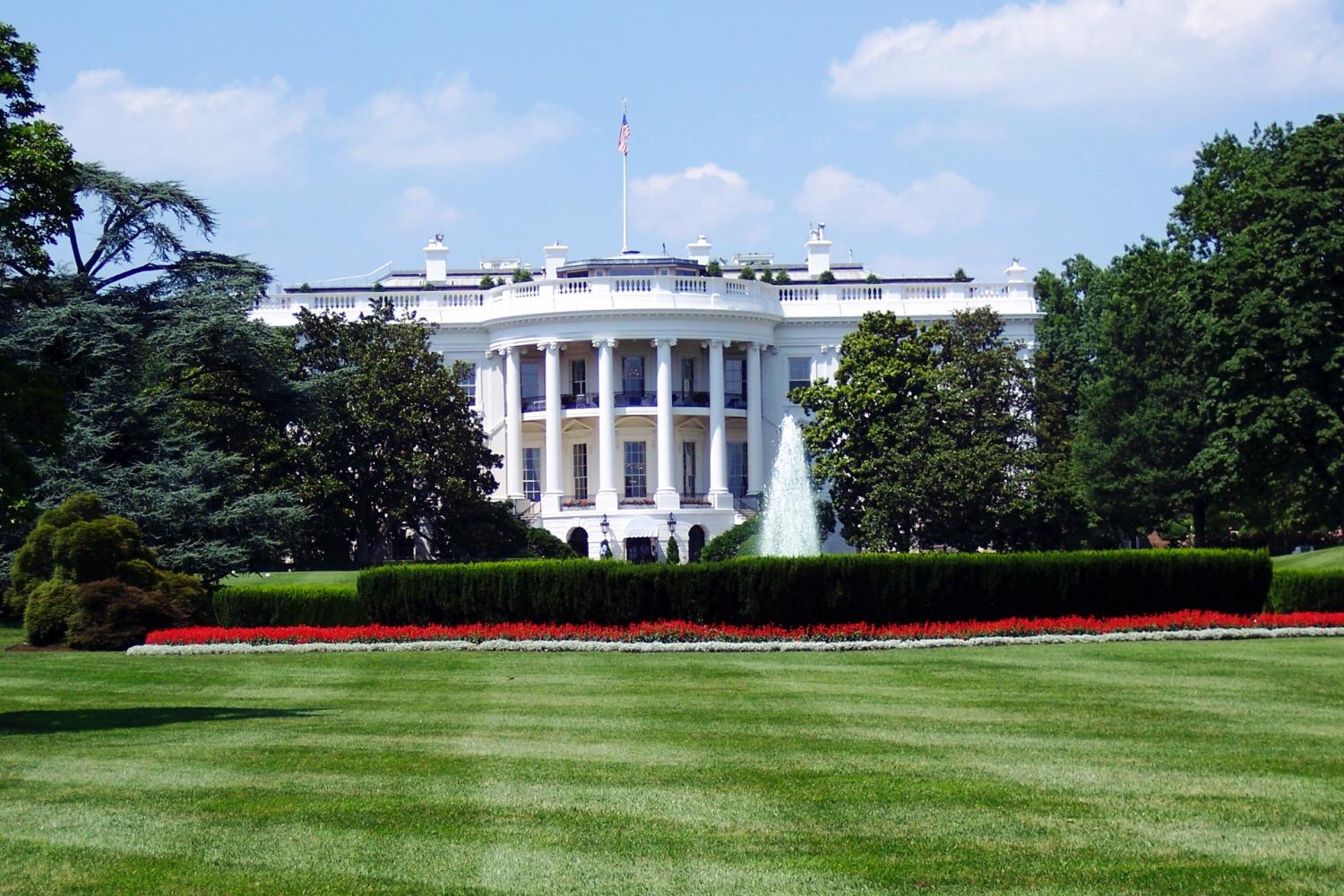

Never mind the political events that unfolded over the past eight days — we’ll leave that to the good folks at The Hill, Politico and Saturday Night Live. The latest shenanigans are a separate issue from the effort to protect and secure voting rights, which is still top of mind for many brands, companies and their nonprofit partners. With the U.S. presidential election only four weeks away, we’re updating you on the latest in how the U.S. business community is ensuring everyone can have their voices heard at the polls on November 3.
Editors note: Be sure to sign up for the weekly Brands Taking Stands newsletter, which arrives in your inbox every Wednesday.
Yes, you should Absolut-ly vote: Absolut has been one of the bolder brands when it comes to spending coin on advertising and sponsorships. It became a sponsor of "RuPaul’s Drag Race" long before the show caught on with a more mainstream audience. Earlier this year, it chose Valentine’s Day to raise awareness about sexual assault. And now, the brand, along with its parent company, Pernod Ricard, are spending ad dollars urging Americans to vote.
While we’re on the subject of beverages: Seattle-based Jones Soda is partnering with the nonprofit and nonpartisan Voter Participation Center to boost the rolls of eligible voters. Potential voters can scan a code on one of the brand’s bottles or visit the organization’s site to find out information about their home state’s registration deadlines and how and when they can vote.
Opting outside and for voting rights: REI has long encouraged its employee and customers to vote with their feet — as in, choosing to enjoy the great outdoors instead of staying open on Black Friday. Now, the outdoor retailer has an internal campaign to ensure employees can exercise their voting rights, whether that’s by sending in their ballots early or by mail. In the event going to the polls is the only option, the co-op says it’s offering flexible scheduling for employees, or they can take a flexible day designed to allow for taking time off for advocacy, enjoying the outdoors, community service or voting. The company has also launched its own site to educate both employees and customers about how they can “gear up to vote.”
Tuning out voter suppression and turning out citizens to the polls: The Black American Music Association (BAM) recently announced a partnership with the Voting Rights Are Civil Rights Initiative. The campaign is focused on protecting voting rights in 14 swing states and 54 counties with high Black and Latino populations. The groups say it is working with other entertainment industry groups, community organizations, voting rights activists and former election commissioners.
This brand screams for ice cream — and a fair election: Ben & Jerry's says it’s ramping up its fight to end systemic racism and secure voting rights by bringing back Justice ReMix'd, both an ice cream flavor and campaign dedicated to radical change in the U.S. criminal justice system and civil discourse. Further, the company will shutter all of its owned and operated facilities in the U.S., including its headquarters and ice cream factories, on November 3 to encourage all employees to cast their ballots. The company also supports legislation to make Election Day a federal holiday.
United, let’s vote: This week, the United Way kicked off the Vote United Election Hub in a bid to ensure anyone who wishes to perform their voting rights can do so. Developed with the nonpartisan civic organizations When We All Vote and VoteAmerica, this site serves as a dedicated resource offering individuals with the tools they need to register to vote, request an absentee ballot, find a polling location, and contact a local election office so each eligible voter in the U.S. can participate in the November elections.
Need a Lyft to the polls? Starbucks will provide its U.S. employees with a free Lyft ride of up to $75 so they can vote at the polls, volunteer as a poll worker, or drop off a ballot at an early voting location any time from now until November 3. This summer, the coffee giant announced it was offering retail employees options so they would not have to choose between a shift and voting on November 3.
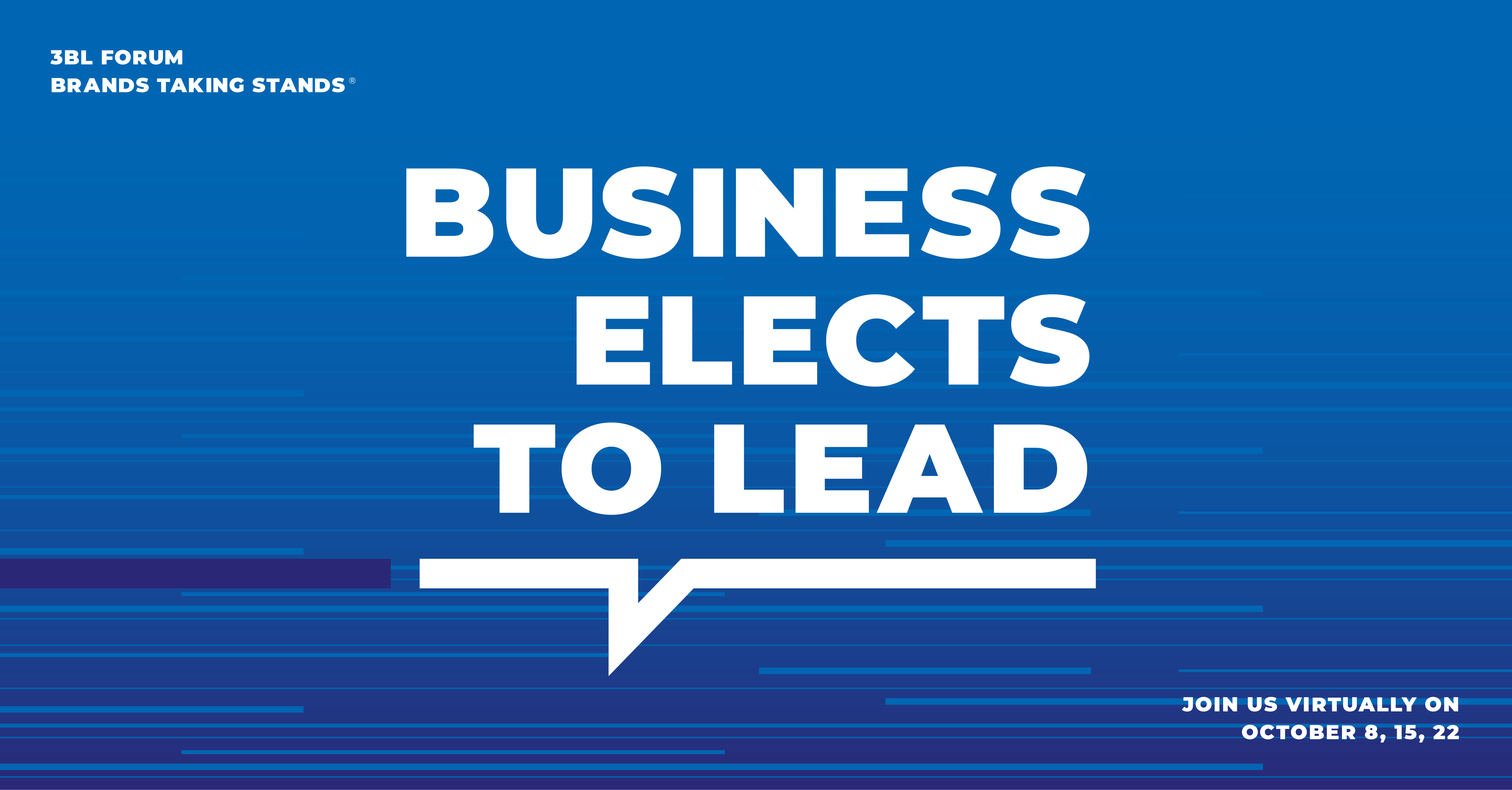
Starting at Noon ET Thursday, October 8, and for the following two Thursdays, October 15 and 22, we’ll be talking about business leadership during times of crisis at this year’s 3BL Forum – Brands Taking Stands: Business Elects to Lead. Be sure to register for free here!
Image credit: Aaron Kittredge/Pexels
Food Waste and the Global Hunger Crisis: Momentum Builds for a More Holistic Solution


Food waste has proven to be an intractable problem. According to the United Nations, about 30 percent of all food produced gets lost along the supply chain, dragging a heavy chain of carbon emissions and other impacts along with it. That data point rings with irony as the global numbers on malnourishment remain stubbornly high. Now it appears that the business community has finally connected the dots between food waste and the hunger crisis and is in position to take concrete action.
Enlisting the power of leaders to lead on food waste
One sign of positive change is evident in the meteoric growth of the 10x20x30 global initiative on food waste.
The private-sector project launched just over 12 months ago, under the wing of the World Resources Institute (WRI). It builds on the efforts of the Champions 12.3 coalition of private sector, government and civic leaders.
Champions 12.3 is on a mission to promote the ambitious goal of cutting global food waste at the retail and consumer levels in half by 2030, in accordance with Target 12.3 of the United Nations Sustainable Development Goals (SDGs). SDG Target 12.3 also calls for reducing food losses along the production and supply chain, including harvest-related losses.
The 10x20x30 initiative was announced in September 2019 with only a handful of founding private-sector partners, including Aeon, Ahold Delhaize, Carrefour, Ikea Food, Kroger, Metro AG, Pick n Pay, The Savola Group, Sodexo, Tesco and Walmart. Though few in number, those companies wield considerable influence globally.
“Participants include five of the 10 largest food retailers in the world, the world’s second largest food service provider, and leading food retailers in regions such as southern Africa and the Middle East. Combined, participants operate in more than 80 countries,” WRI pointed out last year.
Momentum builds on food waste solutions
The numbers in the title of the 10x20x30 initiative refer to a pledge from each of the 10-plus partners to enlist 20 of their leading suppliers in the effort to halve food waste by 2030.
The power of a few influential corporations to make change was demonstrated last month when Champions 12.3 announced that the partners have already enlisted almost 200 of their suppliers.
Each of the suppliers has committed itself to the target-measure-act strategy advocated by Champions 12.3. In addition to setting a 50 percent waste reduction goal, the strategy also commits each supplier to measuring their food waste and taking concrete steps to reach the 50 percent goal.
Dave Lewis, who is an executive at Tesco and the chair of Champions 12.3, made it clear that this is only the beginning. “The good news is action is replacing talk. 10x20x30 is a great example of how companies are working in partnership with food suppliers to tackle this issue from farm to fork and I now urge others to follow their example,” Lewis said.
Leading by example
Though the target-measure-act strategy may seem overly simplistic, it has proven to create a framework for rapid change.
Champions 12.3 cites the example of Tesco, which asked 27 of its suppliers to take on the strategy in 2017.
“Now 71 of the retailer’s suppliers have published data on their food loss and waste. Their collective efforts contributed to the United Kingdom’s announcement earlier this year that the country has reduced food loss and waste by 27 percent since it began measuring wasted food in 2007 — making it the first nation in the world to surpass the halfway mark toward SDG Target 12.3,” explains Champions 12.3.
Food waste and the hunger connection
The 10x20-30 initiative draws attention to the need for holistic food waste solutions. In the context of persistent, widespread malnutrition, Champions 12.3 makes the case that food waste represents an inexcusable moral failure.
Approximately 10 percent of the world’s population experiences the impacts of malnutrition, and the numbers threaten to rise on the heels of the COVID-19 crisis. The element of global hunger is also reflected in the economic impacts of the pandemic.
“Farm-level losses have increased in many countries as distribution has been disrupted and restaurants and other hospitality businesses have reduced operations,” Champions 12.3 observes. “Addressing food loss and waste in a food business’s operations is a key strategy for ensuring a sustainable business as well as a sustainable food future.”
Next steps for combating food waste
The 10x20x30 initiative does not claim to have the solution for all food waste challenges, but it does provide a platform for retailers and their suppliers to share innovative solutions and investment opportunities while tightening up their own operations.
Recent years have already seen an increased interest in rescuing food at the supermarket and retailer level, and the 10x-20x30 initiative provides its partners with a platform for extending those efforts to reach individual consumers.
In one such example, Kroger has taken note of consumer surveys that indicate a rising concern over food waste prevention, which researchers have linked to a rise in the number of home-prepared meals during the COVID-19 crisis.
The COVID-19 pandemic has also underscored how much more work remains to be done at the supermarket and restaurant level. Here in the U.S., a massive amount of produce went to waste in the fields after COVID-19 plunged the food service and hospitality sectors into crisis, indicating a significant underlying imbalance between food production and consumption.
As researchers study the impacts of COVID-19 on food systems and hunger, the 10x20x30 initiative all but guarantees that hundreds of companies are poised to take advantage of lessons learned, leading to a more efficient and equitable management of global food supplies.
Image credit: PxHere
The Feds Made It Clear an Equitable U.S. Economy Isn’t a Priority. Businesses Should Pick Up the Slack, Say Citizens
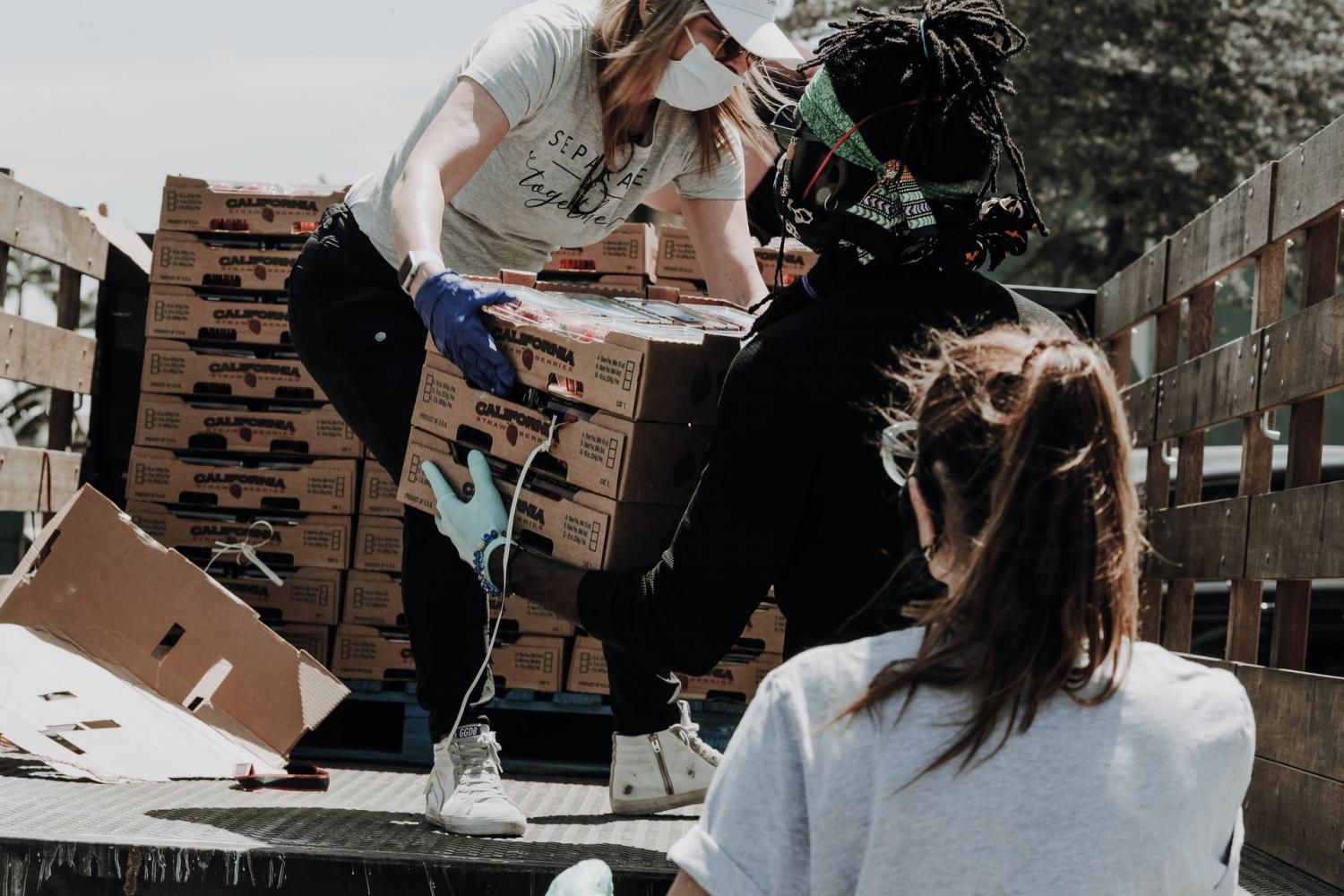

There’s no shortage of commentary making the case that the U.S. economy isn’t working out so well for many Americans. Poll after poll suggests that Americans believe corporate America needs to focus on the needs of workers, millions of whom have confronted the devastating consequences of the coronavirus pandemic.
A recent survey shows a wide gap in the percentage of Americans who believe corporations need to step up — and the number who think that is actually the current reality. According to Just Capital, over 90 percent of U.S. citizens say companies should “value all stakeholders,” while only half of them think companies actually do this.
Bottom line: Many citizens have concluded that the U.S. economy has left behind many of the country's lowest-paid workers. By a margin of 4 to 1, Americans responding to this Just Capital survey agree that large public companies have a responsibility to consider the burden their operations have on all of their stakeholders. Nevertheless, many citizens believe the stubborn Milton Friedman ethos still has a vice grip on many boardrooms: Americans are twice as likely to believe companies have a positive impact on shareholders than on the economic well-being of their lowest-paid employees — and do so by a 70 to 35 percent margin.
“To regain trust, companies should align business practice with the priorities of the American public,” said Martin Whittaker, CEO of JUST Capital, in an emailed statement to TriplePundit. “Overall the American public has been remarkably consistent over the last six years in what issues matter most. Across demographics — liberal, conservative, high-income, low-income, men, women, millennials, and boomers — Americans want companies to put workers at the heart of just business practices. It's time to move from commitments to action, and this year’s survey results provide a clear roadmap for what corporate America should prioritize to deliver on the promise of an economy that serves all Americans.”
When Just Capital asked Americans to be more specific about their concerns over the U.S. economy during this survey, challenges that weigh on workers dominate the top 10 most mentioned problems. They include a livable wage, a commitment to human rights in the supply chain, investments in workforce training, ensuring employees’ health and safety, and an offer of some level of a work-life balance for all.
Just Capital says it will announce the companies that have come close to meeting those aspirations for a fair U.S. economy next week.
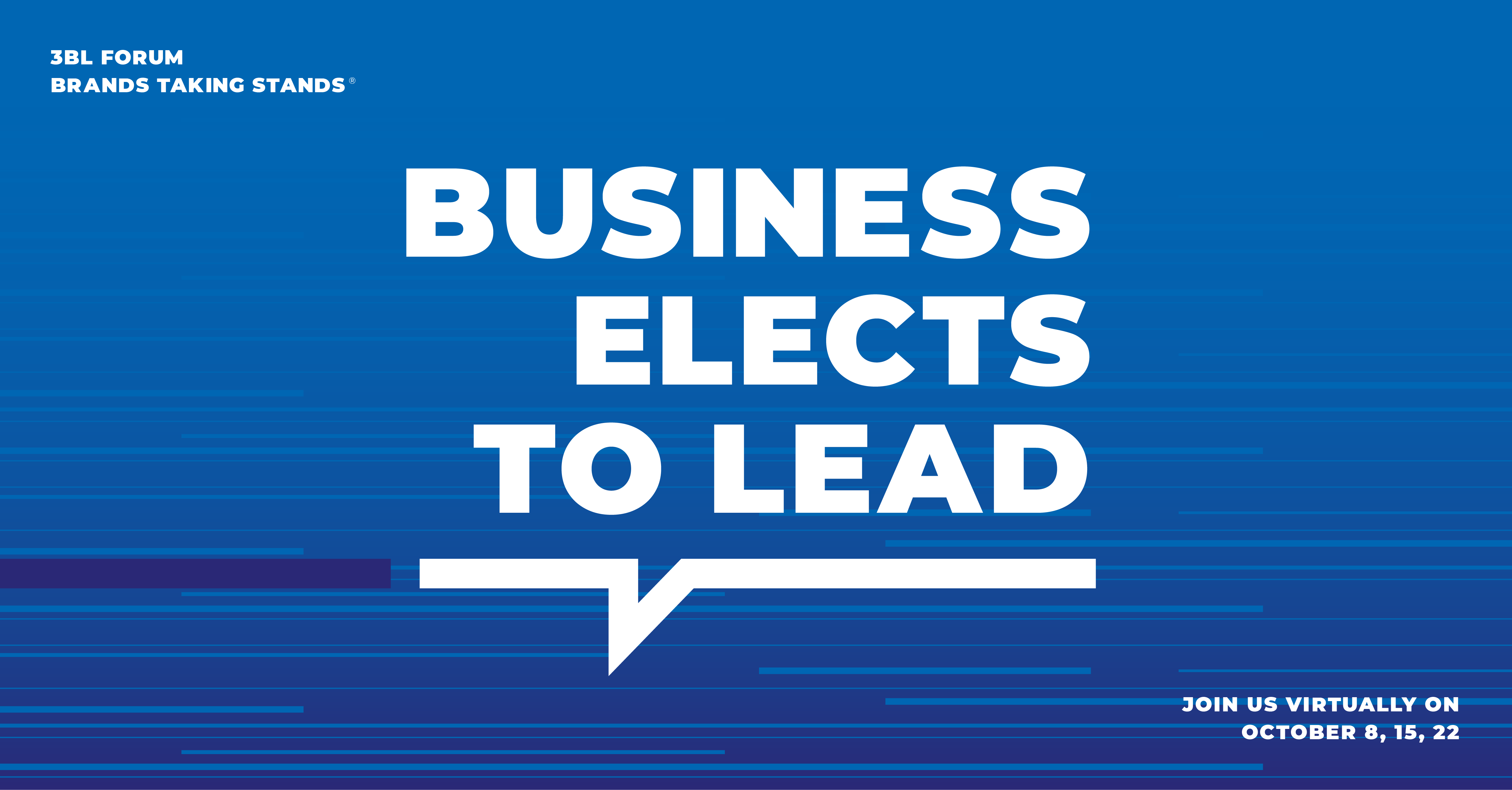
Starting at Noon ET this Thursday, October 8, and for the following two Thursdays, Oct. 15 and 22, we’ll be talking about business leadership during times of crisis at this year’s 3BL Forum – Brands Taking Stands: Business Elects to Lead. Be sure to register for free here!
Image credit: Joel Muniz/Unsplash
With Oceans in Peril, This Fund Seeks to Reverse the Decline


The investment giant Credit Suisse recently announced a new ocean health impact fund through a partnership with Rockefeller Asset Management. The new Ocean Engagement Fund has already raised $212 million in pre-launch.
A market-driven approach to help heal the world’s oceans
The two investment firms say this fund is unique in being the first fund solely tackling U.N. Sustainable Development Goal (SDG) 14: life below water. The fund is the second at Credit Suisse to tackle a single SDG, with another fund focused on SDG 12: responsible production, which the company launched last year.
The fund’s portfolio will include 30 to 50 businesses, yet to be chosen by the two organizations. The Ocean Foundation, a community foundation focused on ocean conservation, will be advising the fund on which businesses to include in the portfolio.
According to the partnership, the fund’s emphasis will be on companies providing innovative solutions to ocean sustainability. The Ocean Foundation will also share best practices with the fund’s partners to help move businesses and their stakeholders away from harming the ocean and closer toward achieving a net-positive marine habitat impact.
How will this fund work?
To carry out these goals, this fund’s managers say it will address three key themes: pollution prevention, carbon transition and ocean conservation. Considering the growing traction of the Task Force on Nature-Related Disclosures (TNFD), the guidelines of which seek to move capital to “nature-positive activities,” the fund is certainly timely.
In a statement, Marisa Drew of Credit Suisse spoke of the need for the new fund. Drew observed that considering a third of institutional investors are keen to invest in the Blue Economy, the ocean remains one of the least invested assets covered by the U.N. SDGs. The new fund aligns with commitments by Credit Suisse to provide over $323 billion toward green bonds and a low-carbon economy in the next 10 years. It also comes after the issuance of a $28.6 million bond in partnership with the World Bank last year to finance fresh and saltwater habitats and resources.
The fund’s launch is also prescient in another way, coinciding as it has with last month's U.N. Biodiversity Summit, during which world leaders attempted to finalize a new deal for nature. This new deal would be in the form a global agreement similar to the 2015 Paris Accords. A 20-point plan by the U.N. outlined in January had already acknowledged the need to protect natural habitats to avert a sixth mass extinction.
Further, the current U.N. plan commits to protect 30 percent of terrestrial marine and freshwater habitats. The plan’s authors also warn that a third of the world’s ocean and land must be protected to reverse biodiversity decline.
It will be an uphill battle to restore the oceans
On that point, a letter from a coalition of 140 nature conservation organizations has been sent this week to U.N. Secretary-General Antonio Guterres. The letter highlights the issues raised by the summit, asserting that $500 billion must be spent annually to fund habitat restoration, creation and protection. Reinforcing this sentiment, the World Economic Forum (WEF) warned in July that over half of global GDP, or $44 trillion, is exposed to risks from nature loss.
Along with Credit Suisse, another organization trying to address the lack of investment in protecting natural marine habitats is The Nature Conservancy (TNC). The environmental nonprofit is currently launching a $40 million suite of ocean conservation bonds with the goal to use the bonds to raise $1.6 billion for marine conservation.
A recent study by the IPCC further underlines the specific importance of oceans as natural capital. It found that the world’s oceans have absorbed 93 percent of the extra heat generated by human activity and 25 percent of human-generated carbon dioxide emissions since 1970. These facts demonstrate the role of oceans in helping address some of the nature-related climate risks the WEF identified.
Nevertheless, the aforementioned biodiversity summit highlights the oceans’ ongoing fragility. Not only are oceans rich stores of biodiversity, but they also act as crucial heat and carbon sinks for the planet. Hence the Credit Suisse Ocean Engagement Fund, and others like it, could hail a new era in which the role of blue assets in managing nature-related climate risks is better understood. A rapid revaluing of blue assets may soon be on the way.
Image credit: Milos Prelevic/Unsplash
What Do Employees Seek in Business Leadership? They Want to Feel They’re Part of Something That Matters


As this pandemic continued to take its toll, many within business leadership ranks quickly opted for employee layoffs or ending hazard pay, while others prioritized wellbeing for employees and society. The online company culture and salary review website Glassdoor recently analyzed U.S. and U.K. employee reviews during the COVID-19 pandemic to rank CEOs based on their performance during the pandemic. The bottom line is that employees who felt as if they were cared for have responded most positively to their companies’ leadership.
Glassdoor ranked these CEOs based on reviews that were related to work-life balance, flexibility, remote work policies, health benefits, communication and leadership during this crisis. The reviews Glassdoor’s team analyzed were left by current and former employees from March to July 2020. The company’s staff mined CEO ratings, how employees reviewed senior leadership, and employees’ comments and reviews to build out this ranking. The industry-diverse list of leaders also shared common approaches in prioritizing the needs of their employees.
Who are the CEOs have stepped up during this pandemic?
Glassdoor ranked Mark Aslett, the CEO of the aerospace and defense company Mercury Systems, as the highest rated chief executive during this ongoing crisis. The data Glassdoor reviewed suggests that employees appreciated Aslett’s proactive approach since March. As the COVID-19 pandemic ensued, Aslett created a $1 million COVID-19 relief fund to help support employees. To be fair, the defense industry has suffered less severe impacts than other sectors over the past several months, Aslett told Forbes in a recent interview. Nevertheless, Mercury Systems had the capacity to sustain these additional costs. Aslett took measures to suspend employee layoffs and offered perks such as Uber Eats credits to employees working on-site.
Other executives demonstrated leadership by going beyond performing their day-to-day position as the chief executive of a company. Ranked second in this Glassdoor survey is G. Brint Ryan, CEO of the global tax firm Ryan LLC, who oversees a company that not only has received positive reviews for work culture in his home state of Texas, but also across the firm’s European offices. Ryan’s work led him to be appointed to various economic task forces in Texas.
Sometimes leadership means having the intuition to see a trend or crisis before everyone else falls in line. For example, the CEO of the AIDS Healthcare Foundation, Michael Weinstein, called on the World Health Organization (WHO) to declare COVID-19 an international health crisis in January 2020, long before many leaders were even speaking about the pandemic. Shortly after, the foundation’s leadership also called for an independent evaluation of the WHO’s response to COVID-19.
Finally, harnessing one’s company to do good can also help build loyalty within an organization’s ranks. For example, Eric S. Yuan, who heads Zoom Video Communications, took bold action early during this crisis — and his decision to let countless students, educators and others use the firm’s video conferencing service for free has now made the term “Zoom call” part of our everyday lexicon. The video service helped keep millions of people connected during an isolating and frustrating time — and reaped an amount of goodwill that eludes countless companies and brands.
Business leadership requires investments in employees
When parsing through employee reviews, Glassdoor identified specific common phrases such as work-life balance, flexible work schedules, and support for health and well-being. On that point, reviews for Stanley Middleman, the CEO of Freedom Mortgage, showed an example of how business leadership can stand tall within all of these areas.
In March 2020, Freedom Mortgage took action on COVID-19 by suspending foreclosures and evictions. Around 96 percent of employees transitioned into remote working while the company implemented COVID-19 health and safety policies and protocols for the wellbeing of staff on-site. Instead of opting for layoffs, Freedom Mortgage announced it would employ another 3,000 mortgage professionals over the course of six months to support the company. That proactive approach can help explain why Middleman rounded out the top five in this Glassdoor CEO ranking.
It’s no secret COVID-19 has been a disruption for business leaders. However, these CEOs have seen the opportunities in these circumstances to bolster their companies’ success. And this comes from the most important drivers of any company’s longevity: its employees. Equally applicable to consumers, consistent communication, flexibility, and economic and social support for employees leads to retention, satisfaction, and better performance. Time will tell how these adjustments and policies will continue or need to be adjusted, but these top examples of business leadership have already built a strong foundation.
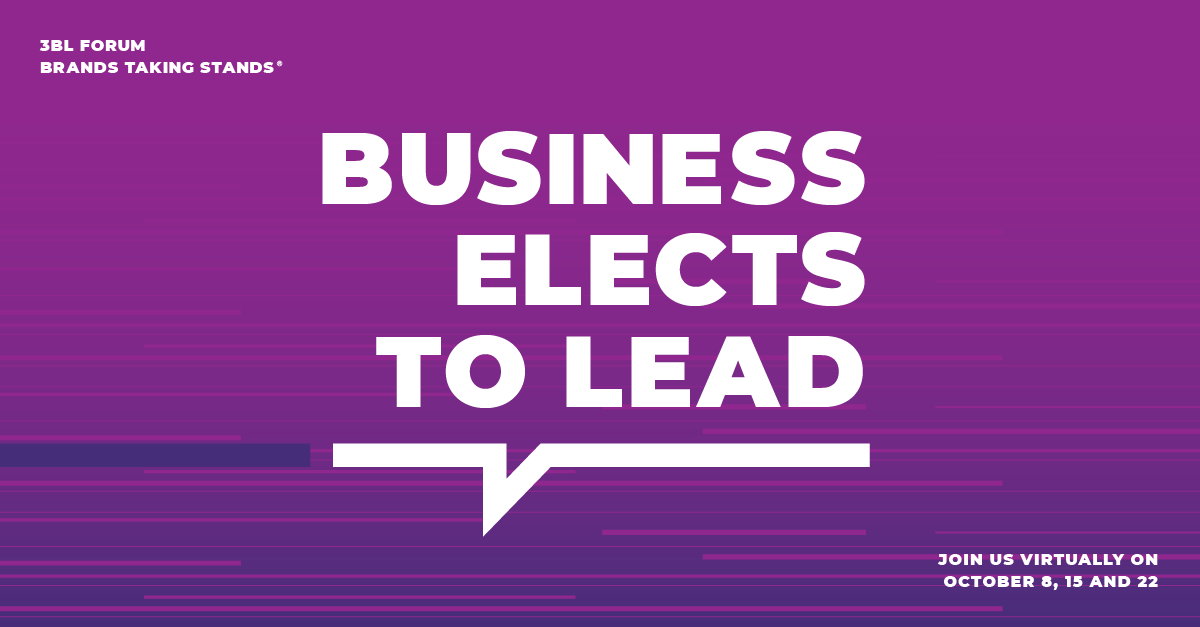
Starting at Noon ET this Thursday, October 8, and for the following two Thursdays, Oct. 15 and 22, we’ll be talking about business leadership during times of crisis during this year’s 3BL Forum – Brands Taking Stands: Business Elects to Lead. Be sure to register for free here!
Image credit: Andrew Neel/Pexels
Comedy Central, MTV and VH1 to Florida: Let People Exercise Their Voting Rights
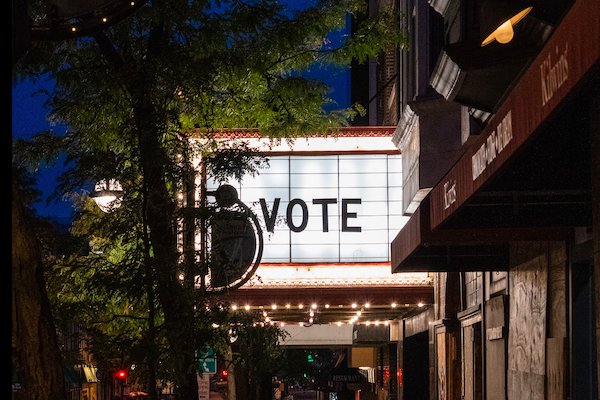

In the 2018 election, Florida voters by almost a 30-point margin approved Amendment 4, which reinstated voting rights to an estimated 1.4 million Sunshine State residents who had past felony convictions. The state’s legislature and governor, however, soon responded by passing a law that required those same residents to pay any outstanding fines, fees and other financial penalties before they could vote again. So much for the message saying one can move on after paying his or her debt to society.
Professional athletes including LeBron James have partnered with the Florida Rights Restoration Coalition (FRRC), which established a “fines and fees” fund to help Floridians pay off any such debts. At last count, the organization says it has received $20 million in the effort to restore those residents’ voting rights. In addition to these athletes, Michael Bloomberg has also pledged funds, which in turn has inspired a lawsuit filed to halt that effort.
Among the companies contributing to this campaign is the ViacomCBS portfolio of entertainment brands, more specifically the popular cable channels Comedy Central, MTV and VH1. The channels recently donated $250,000 to the FRCC. That pledge came through last month on National Black Voter Day (September 18), the same day another ViacomCBS media company, BET, partnered with groups including the National Urban League to shine light on the challenges Black Americans across the U.S. face when they seek to exercise their voting rights.
“No American citizen should be forced to choose between putting food on their table or voting. No one should be silenced because they are poor,” said Desmond Meade, FRRC’s executive director, in a public statement. “While we are just two weeks away from Florida’s voter registration deadline, donations like this strengthens our resolve to continue fighting to free the vote in Florida.”
ViacomCBS’ effort reflects what is increasingly becoming mainstream across corporate America: ensuring all Americans can show up and make their voices heard without confronting any barrier to their voting rights. Whether it’s the deployment of technologies, partnering with activist groups, paying workers to help out at the polls, or ensuring they can vote without taking time off, the message is clear: Voting isn’t an inconvenience like going to the dentist or picking up a kid from soccer practice — it’s a basic right.
On that point, we’d like to remind you that the 3BL Virtual Forum is starting this Thursday, October 8, continuing on the following Thursdays, October 15 and 22. If you are particularly focused on the upcoming November election, you’ll definitely not want to miss Thursday the 22nd, as we will have some leaders from ViacomCBS speaking about the “why” and “how” that are driving the company to ensure everyone is heard and can cast their ballots without doubt or fear.
Registering for this year’s 3BL Forum is free, and we look forward to “seeing” you.
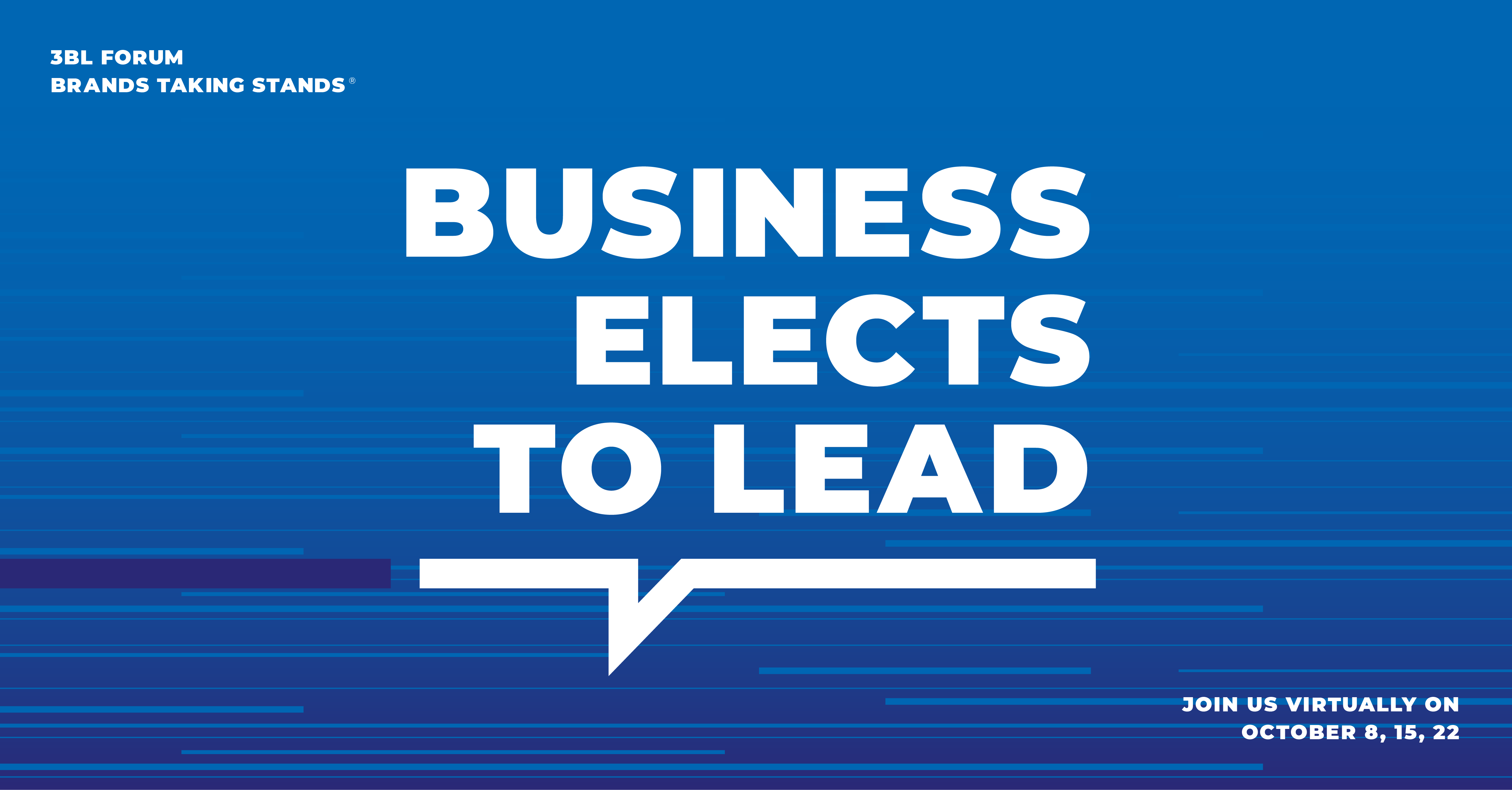
Image credit: Noah Pederson/Unsplash
Investors’ Promises to Stop Deforestation in the Amazon Have Fallen Short, Report Finds


Last year was a brutal time for deforestation in Brazil and the greater Amazonian rainforest, and this year became even worse. Estimates have suggested that the total amount of forest acreage lost to wildfires during 2020 is on course to exceed what was destroyed last year by well over 10 percent.
And despite evidence suggesting that stronger rainforest preservation efforts result in a net positive for the global economy, deforestation has continued at a faster rate despite the global pandemic.
Last year, a coalition of more than 200 investors called for global action to stop deforestation. The Principles for Responsible Investment and Ceres coordinated that effort, which called on companies to make public their deforestation policies and follow up on their progress with complete transparency.
But one year later, an assessment that the nonprofit Global Canopy recently carried out found a completely different reality. According to that group’s research, only 14 percent of those 235 investor groups that signed last year’s call to action have taken such steps to halt deforestation. In a nutshell, we have a situation where the pot is calling the kettle black — and the key drivers of deforestation in the Amazon have largely stayed the same as well.
“The financial sector is fueling deforestation in Brazil through their investments in companies in beef and soy supply chains. Investors raised the alarm last year because of the financial risks linked to deforestation,” said Niki Mardas, Global Canopy’s executive director, in an emailed statement to TriplePundit. “The situation this year is far worse, and although some investors are showing real leadership, more action is needed across the sector.”
Global Canopy’s analysis found that of those 33 investment groups that have taken the steps to formulate a clear deforestation policy, only 21 of them have taken the necessary steps to ensure their portfolios are accounting for commodities that put forests at risk. Further, 12 of the 33 groups have disclosed policies for timber and palm oil, but not for soy and cattle — the two commodities that many critics of Brazil’s land management say are the main drivers of deforestation across Latin America’s largest nation.
In fairness, any pressure put on Brazil’s president, Jair Bolsonaro, is akin to taking down a brick wall with a pen knife. Yet despite ongoing support the president has received from much of the business community, there is evidence some investors and business leaders fear the battering of Brazil’s image and destruction of its land presents too high of a price to pay. In August, an alliance of Brazilian companies and business organizations urged Brazil’s federal government to take stronger measures against the illegal deforestation that’s occurring across the country.
Image credit: Marcus Dall Col/Unsplash